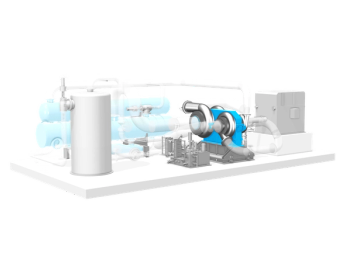
Why Second Order Kalman Filter is needed for Advanced Vibration Monitoring
1 INTRODUCTION
Noise is a significant issue when analyzing the measured vibration signals of turbo-machines. A suitable filter should be used to remove noise from vibration
Vibration signal processing/filtering is usually done with a “Fast Fourier Transform” (FFT) method. This takes a fixed length section of the time history, performs an FFT and then moves along a small increment and repeats the process. This produces a series of FFT spectra spread across the whole time period of the vibration measurement. The FFT transforms a waveform into a series of sinus and cosines (or amplitudes and phase-angles) at each frequency present in the original signal.
For very complex noise patterns on measured vibration, a suitable non-linear filter should be used.
2 SECOND ORDER KALMAN FILTER
In 1960, Kalman introduced a new method to formulate Minimum Mean Square Error (MMSE). Kalman Filter is a recursive processing statically optimal observer and has a good dynamic behavior and disturbance resistance, originally an optimal estimator used for estimation of state vector of linear systems. An important assumption underlying Kalman Filter theory is that the measurements are a linear function of the system state. In complex vibration monitoring applications, the measured quantities are a non-linear function of the system state. For example, in general, damping effects are complex non-linear functions of vibration. The usual approach is linearization of measurement function about the current estimated state. If however the nonlinearity is comparable to the measurement error, such as some complex non-linear vibration monitoring problems, then the standard Kalman Filter yields inferior performance (divergence or large error). This note very briefly presents the Second Order Kalman Filter to solve complex non-linear vibration monitoring problems. This extension of the Kalman Filter compensates for measurement of non-linearity and complex noise patterns by appropriate bias compensation and measurement variance correction. In Second Order Kalman Filter theory, measurement “z” is assumed to be a non-linear function of the state vector “x” plus an addictive random noise “υ”. The non-linear function can be expanded in “Tyler Series” about the estimation of the state vector. First and second order terms could be retained to formulate Second Order Kalman Filter.
Details of Second Order Kalman Filter formulation have been expressed in many references and are not discussed here.
Second Order Kalman Filter improves the non-linear measurement estimation by involvement of matrix “E” and vector “F” to Kalman-Gain and State-Up-Date respectively. By introduction of matrix “E” and vector “F”, the biasing effects of nonlinearity will take into account variance and predicted measurement respectively. These corrections come from higher order terms in the state estimate error and will cause better convergence, lower bias and lower mean square error.
Amin Almasi
Amin Almasi is senior rotating equipment consultant in Brisbane, Queensland, Australia.
Email:
Newsletter
Power your knowledge with the latest in turbine technology, engineering advances, and energy solutions—subscribe to Turbomachinery International today.




